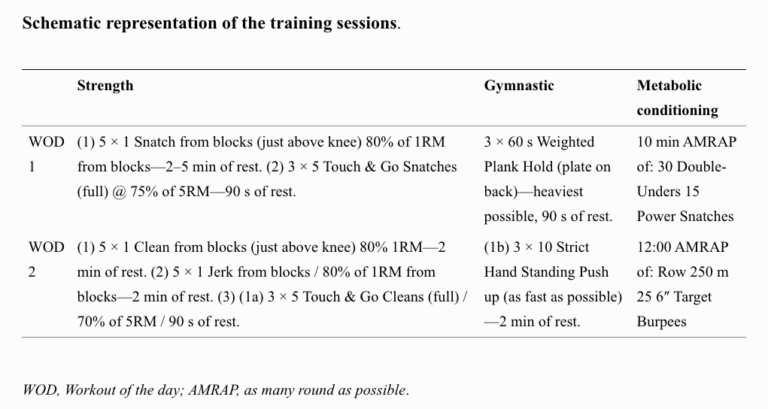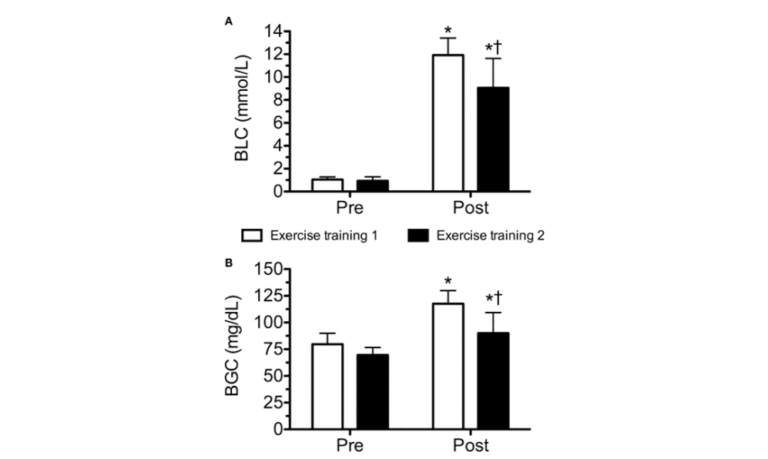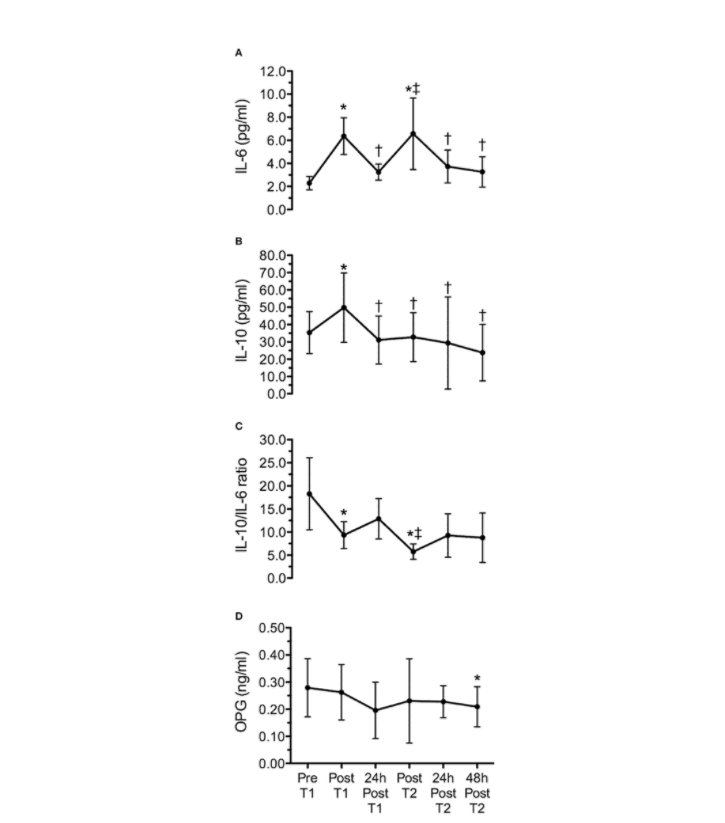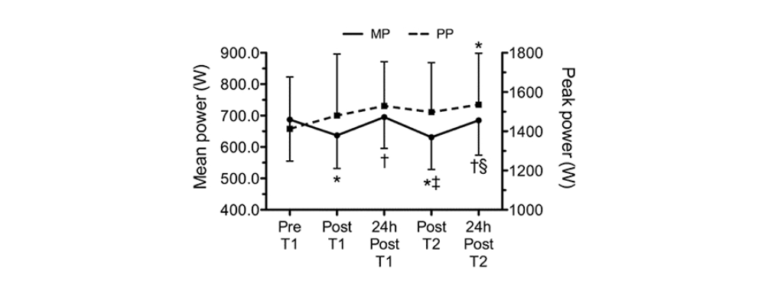Limited previous research has indicated repeated, high-intensity exercise increases markers of blood oxidative stress and inflammation — including interleukin-6 (IL-6), markers of muscle damage, and markers of oxidative stress — for multiple days after exercise (1). IL-6 increases as much as 100-fold during exercise (2), in part as a direct response to muscular damage and to increase muscular energy supply (3). Previous studies, however, have not tested the direct effect of CrossFit workouts performed on consecutive days.
Nine men who had been doing CrossFit for at least six months (mean age: 26.8) were recruited. Subjects were told not to exercise for 48 hours prior to testing. Each subject completed the two workouts described below at the same time on consecutive days.

Figure 1: Schematic representation of the two workouts. WOD 1 was performed on day 1 and was designed to emphasize Olympic lifting, while WOD 2 was performed on day 2 and was designed to emphasize body-weight movements.
As expected, blood lactate and blood glucose concentrations increased substantially immediately after each workout, with greater increases seen after the first workout than the second.

Figure 2: Changes in blood lactate and blood glucose concentrations immediately after each workout
IL-6 levels increased significantly immediately after each workout but were not significantly different from baseline 24 hours after each workout. Interleukin-10 (IL-10) levels increased significantly only after the first workout and were not significantly different from baseline at any other time point studied.

Figure 3: Changes in levels of inflammatory markers at various times after each workout, compared to baseline
Barbell back squat mean power output (as measured using a linear position transducer) was significantly reduced immediately after each workout but was not significantly different from baseline 24 hours after each workout. Peak power output was unchanged throughout the study apart from a significant increase (compared to baseline) observed 24 hours after the second workout.

Figure 4: Changes in levels of inflammatory markers at various times after each workout, compared to baseline
Taken together, these results indicate two consecutive days of CrossFit workouts induce significant but largely temporary changes in the body’s inflammatory state. IL-10 suppresses macrophage activation (4), so the temporary increase in IL-10 immediately after the first workout may indicate a temporary reduction in immune response. However, this status had returned to baseline within 24 hours of each workout. These results are consistent with previous studies of resistance training and high-intensity exercise, which found significant inflammatory responses immediately after exercise that decreased back to (or even below) baseline within 24 hours (5).
As a final caveat, it is worth noting that the small sample size contributed to significant variance in the observed data, as is reflected in the large error bars across all figures. A larger study may detect small changes in inflammatory state and/or power output, which this trial was unable to detect.



